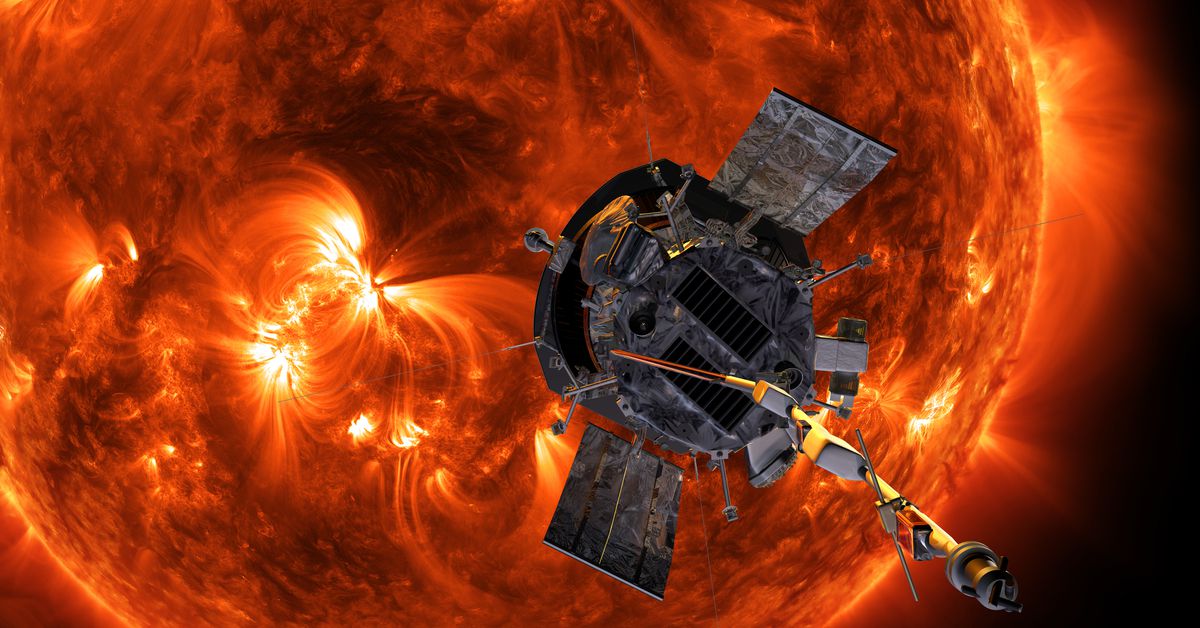On December 26th, NASA’s Parker Solar Probe achieved a groundbreaking milestone by successfully transmitting a signal back to Earth from a mere 3.8 million miles from the surface of the Sun. This remarkable achievement marks the closest any human-made object has ever gotten to the scorching hot star, and it’s a testament to the ingenuity and technological prowess of NASA and its partners.
A Journey of Discovery
The Parker Solar Probe was launched on August 12th, 2018, by NASA in partnership with Johns Hopkins Applied Physics Laboratory. The mission aimed to study the corona, the outer atmosphere of the Sun, which is about 2 million degrees Fahrenheit hotter than the surface. To accomplish this, the probe is equipped with a state-of-the-art heat shield that can withstand temperatures reaching up to 2,500 degrees Fahrenheit (1,371°C), while the probe itself remains at a comfortable 85 degrees Fahrenheit (29°C).
The Closest Approach
On December 24th, the Parker Solar Probe made its closest approach to the Sun, flying past the solar surface at an astonishing speed of 430,000 miles per hour (692,000 km/h). During this time, mission operations were out of contact with the probe, as it was too close to the Sun’s radiation and interference. However, on December 26th, NASA received a signal from the probe, indicating that it had survived the grueling encounter and was operating normally.
Mission Objectives
The Parker Solar Probe is designed to answer some of the most fundamental questions about the Sun and its behavior. By studying the corona in unprecedented detail, scientists hope to gain a better understanding of:
- Solar Wind: The stream of charged particles that flows away from the Sun and affects our planet’s magnetic field.
- Solar Heat: The intense heat generated by the Sun’s core, which is responsible for powering the entire solar system.
- Energetic Particles: The highly accelerated particles that are ejected from the Sun’s corona, which can pose a significant threat to both spacecraft and human explorers.
What’s Next?
NASA expects the Parker Solar Probe to send detailed telemetry data on its status by January 1st. This will provide scientists with valuable insights into the probe’s performance during the close flyby and help them refine their understanding of the Sun’s behavior.
Implications and Future Directions
The success of the Parker Solar Probe mission marks a major milestone in our quest to understand the Sun and its impact on our solar system. The data collected by this mission will have significant implications for:
- Space Weather Forecasting: A better understanding of the Sun’s behavior will enable scientists to predict space weather events, such as solar flares and coronal mass ejections.
- Solar System Exploration: By studying the corona in detail, scientists can gain insights into the formation and evolution of our solar system.
- In-Space Technology Development: The heat shield technology developed for the Parker Solar Probe will likely be used in future missions to explore the Sun’s corona.
Conclusion
The Parker Solar Probe’s historic mission to the Sun is a testament to human ingenuity and the power of scientific collaboration. By pushing the boundaries of what we thought was possible, NASA has opened up new avenues for research and exploration, paving the way for future breakthroughs in our understanding of the universe. As we continue to explore the vast expanse of space, it’s clear that the Parker Solar Probe is just the beginning of an exciting new era of discovery.

